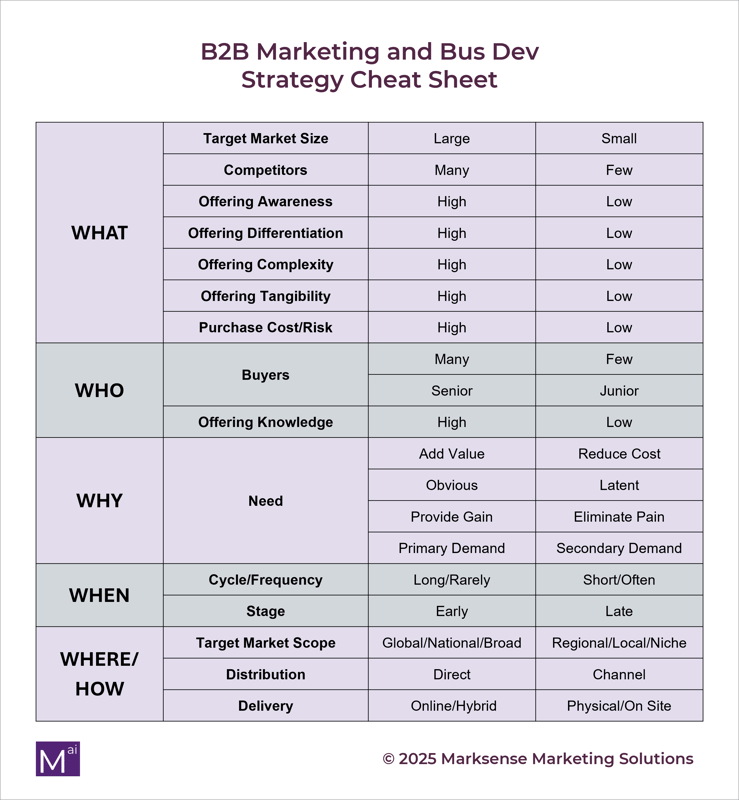February 14, 2025

Not Sure If You Are Wasting Marketing and Bus Dev Spend? Start With this Cheat Sheet
Many B2B companies struggle with marketing and business development because they jump straight into tactics—without first considering the core factors that drive buyer decision making.
"We need to focus more on SEO… We’re spending too much on trade shows… We need more case studies… Getting the reps to hit the phones harder is the answer… We need a podcast…"
Sound familiar?
There are countless marketing and business development tactics, and I’ve seen nearly all of them succeed—or fail—depending on the situation.
So how can business leaders prioritize their marketing and business development efforts and spend for maximum ROI?
Start with the Core Factors Driving the Buyer's Decision
Start by periodically taking a step back and assessing the core factors driving the decision making of buyers for your product or service offering:
- > The dynamics of What you’re selling, including competition and differentiation.
> Whom you’re selling to and how much they understand your offering.
> Why buyers need your product or service.
> When, Where and How your product or service offering is purchased.
The cheat sheet above can help business leaders evaluate these factors. While it simplifies many complexities, it’s a great starting point for ensuring your marketing efforts align with your business reality. I’ve used it with great success countless times when planning marketing and bus dev efforts. Following are two basic examples.
How It Works: Two Examples
WHAT: Complex and Tangible vs Complex and Intangible
Let’s compare an enterprise software firm and a professional services firm: Both may have a medium-sized target market, relatively few competitors, and high complexity, cost, and risk associated with their offerings.
However, the features and benefits of enterprise software are relatively concrete, making industry conferences, analyst relations, and product demos effective tactics.
In contrast, the offerings of professional services firms are highly intangible, making them difficult to demonstrate up front. Theses firms will gain greater traction through thought leadership content, case studies, and networking events.
That's not to say that case studies don't work for a software company and industry conferences won't work for professional services firms—it's a matter of assessing where the greatest bang for the buck is and allocating limited resources for marketing and bus dev accordingly.
WHO: SME Buyers vs Generalist Buyers
The level of buyer knowledge dramatically affects which marketing and business development tactics will work.
If you’re selling to buyers with high product/service knowledge—for example, banks selling to CFOs or IT firms selling to CIOs—your marketing should focus heavily on differentiation and pricing.
If your buyers lack expertise—such as a small business owner purchasing health insurance for employees—your marketing and bus dev tactics should emphasize education, trust-building, and clear demonstration of the value proposition to help buyers feel confident in their decision.
Those are just two examples, but they illustrate how businesses can end up wasting time and resources on ineffective tactics if they don’t take the time to carefully analyze all of the relevant factors driving the decision making of buyers and align tactics appropriately.
If you want to improve how your firm prioritizes and allocates marketing and business development resources, let’s talk.
